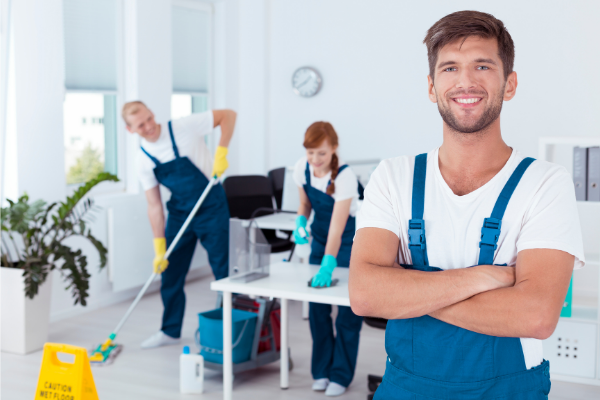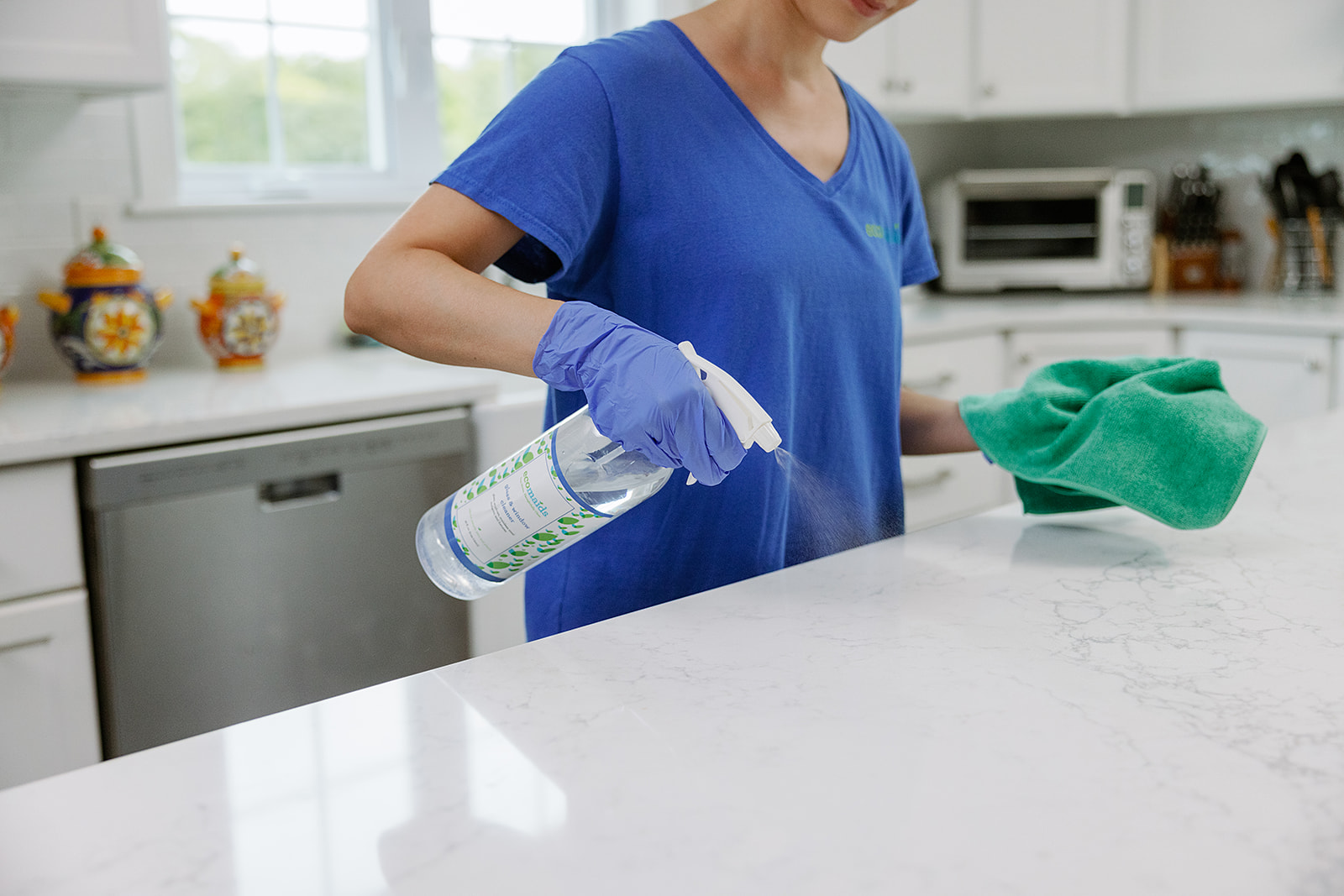Comprehensive Everyday Cleaning Tips: From Defrosted and Cleaned Every Few Months to Removing Clutter
Comprehensive Everyday Cleaning Tips: From Defrosted and Cleaned Every Few Months to Removing Clutter
Blog Article
Understanding the Requirement for Thoroughly Sanitizing and Disinfecting Often Touched Surfaces in High-Traffic Areas
In the world of public health and security, the meticulous disinfection and sanitization of regularly touched surfaces in high-traffic areas stand as paramount steps in preventing the spread of dangerous pathogens. The relevance of this technique extends far past plain cleanliness, delving right into the world of disease avoidance and community well-being. By checking out the numerous facets of surface sanitation, from the threats associated with ignoring cleansing methods to the effective techniques that can be used, a more clear understanding emerges of the important duty these practices play in securing public health. As we navigate this discussion, it ends up being evident that the implications of complete surface area sanitation resound not just within the boundaries of a specific environment but likewise resonate on a wider scale, affecting the wellness and safety and security of people throughout varied public setups.
Value of Surface Disinfection
Stressing the complete disinfection of high-traffic surface areas is vital in preserving a hygienic setting and protecting against the spread of dangerous virus. High-touch surfaces such as door manages, light switches, elevator buttons, and countertops function as breeding premises for bacteria and infections. Routine disinfection of these surfaces is vital to minimize the danger of contamination and transmission of illnesses.
By carrying out a durable sanitation method, businesses and organizations can create a much safer setting for site visitors, customers, and staff members. Correct surface sanitation not just reduces the spread of contagious illness yet also infuses confidence in the sanitation and security of the premises. This positive approach shows a commitment to wellness and wellness, which is specifically essential in high-traffic locations where the possibility of direct exposure to microorganisms is enhanced.
Additionally, surface area disinfection plays an essential duty in overall infection control methods. Combined with hand hygiene techniques, wearing masks, and keeping physical distancing, extensive disinfection of high-touch surfaces creates a comprehensive defense versus the transmission of hazardous bacteria. Focusing on surface sanitation is a vital part of a holistic technique to health and wellness in shared areas.
Dangers of Disregarding Cleaning Practices
Overlooking detailed sanitation of high-traffic surfaces substantially enhances the threat of viral and microbial contamination, posing a major risk to the health and wellness and safety and security of people frequenting these spaces. Failing to execute appropriate cleansing practices can result in the build-up and spread of hazardous microorganisms, including infections and microorganisms, on regularly touched surface areas such as doorknobs, hand rails, elevator buttons, and countertops.

Moreover, disregarding the value of extensive cleansing not only endangers the well-being of individuals yet likewise threatens efforts to preserve a hygienic and clean atmosphere. It is crucial to recognize the relevance of correct disinfection procedures in protecting against the spread of infections and safeguarding public health and wellness.
Efficient Sanitation Approaches
To maintain optimal tidiness and minimize the threat of contamination on high-traffic surface areas, using effective disinfection methods is necessary. Among one of the most common and efficient disinfection methods is using chemical disinfectants. These products can vary in strength and composition, with some targeting specific pathogens like infections or microorganisms. It is crucial to follow the manufacturer's instructions for correct dilution, call time, and air flow when making use of chemical anti-bacterials to ensure their efficiency - Everyday cleaning.
An additional efficient method is using UV-C light. UV-C light has been shown to be reliable in killing a wide selection of bacteria by disrupting their DNA framework, therefore stopping them from replicating. It is crucial to use UV-C light properly, making certain that the appropriate strength and exposure time are applied to attain the desired sanitation outcomes.
In addition, using vapor cleansing as a disinfection method can be extremely reliable, especially on surfaces that are heat-resistant. Steam can permeate porous surfaces and kill germs, viruses, and various other microorganisms properly. When using heavy steam cleaning, it is essential to make certain that the surface reaches the required temperature level for a sufficient amount of time to guarantee appropriate disinfection.
Influence On Public Health
The upkeep of high requirements of sanitation and disinfection on high-traffic surface areas plays why not try here an important duty in securing public wellness. Often touched surface areas in locations with high step, such as doorknobs, hand rails, elevator buttons, and toilet facilities, serve as reproducing premises for damaging virus.
Effective cleanliness techniques not only secure people from dropping ill however additionally add to the general well-being of society. Public wellness authorities emphasize the significance of keeping tidy environments to stop episodes and have the spread of illnesses. In high-traffic areas like flight terminals, colleges, medical facilities, and mass transit systems, the effect of strenuous sanitation actions can not be understated. Prioritizing the sanitization of frequently touched surfaces is a proactive method to promoting public health and wellness and improving the security of individuals in shared rooms.
Executing Regular Cleaning Methods
Immediately setting up and adhering to a consistent timetable of cleaning protocols is paramount for keeping the tidiness and safety of high-traffic surface areas. Routine cleaning methods are necessary in protecting against the accumulation of germs and virus on often touched surfaces, particularly in areas with high foot website traffic. By carrying out a systematic strategy to cleaning, companies can successfully reduce the danger of disease transmission and develop a healthier setting for employees, consumers, and the public.
To develop an effective cleansing schedule, it is vital to identify high-traffic locations that require regular attention. These areas might consist of doorknobs, handrails, lift buttons, toilet facilities, and shared tools. Executing a regular cleaning program that targets these surface areas multiple times a day can substantially reduce the spread of damaging microorganisms and viruses.
Additionally, making use of suitable cleansing representatives and disinfectants is crucial to ensuring that surfaces are completely sterilized. Normal training of cleaning staff on appropriate cleaning methods and the relevance of view website adherence to the cleansing schedule is also important in preserving a hygienic atmosphere. By focusing on regular cleansing protocols, organizations can promote the health and wellness and health of individuals who you can try this out engage with these high-traffic surface areas.

Conclusion
To conclude, it is vital to focus on complete disinfection and sanitization of frequently touched surfaces in high-traffic locations to avoid the spread of harmful pathogens and maintain public health. Disregarding correct cleaning techniques can raise the threat of contamination and transmission of conditions. By carrying out routine cleaning procedures and using reliable sanitation techniques, we can create a more secure atmosphere for every person (Scrub the Surfaces). It is crucial to acknowledge the significance of preserving tidy surfaces in high-traffic locations to guarantee the health of the community.
In the realm of public health and security, the meticulous disinfection and sanitization of regularly touched surfaces in high-traffic locations stand as paramount steps in preventing the spread of damaging pathogens. By exploring the numerous aspects of surface disinfection, from the threats associated with disregarding cleaning protocols to the efficient techniques that can be used, a more clear understanding emerges of the important function these methods play in guarding public wellness.Additionally, employing steam cleaning as a disinfection technique can be very reliable, especially on surfaces that are heat-resistant. When utilizing vapor cleansing, it is important to make certain that the surface reaches the required temperature for a sufficient amount of time to ensure appropriate disinfection.
In final thought, it is vital to focus on thorough sanitation and sanitization of often touched surfaces in high-traffic areas to avoid the spread of unsafe pathogens and preserve public wellness.
Report this page